Integrate Low Code Automation with Azure DevOps
Learn how to integrate Azure DevOps with Low Code Automation.
Integrating Low Code Automation with Azure DevOps makes it easier to report and track bugs during test runs. You can log and track issues directly within Low Code Automation, without switching between tools.
Prerequisite
- An existing Azure DevOps project.
- Builds in Low Code Automation.
Steps to integrate
To integrate Azure DevOps with Low Code Automation:
- Sign in to Low Code Automation.
- Select Integrations from the left pane.
- On the Integrations page, click + Connect under the Azure DevOps tile.
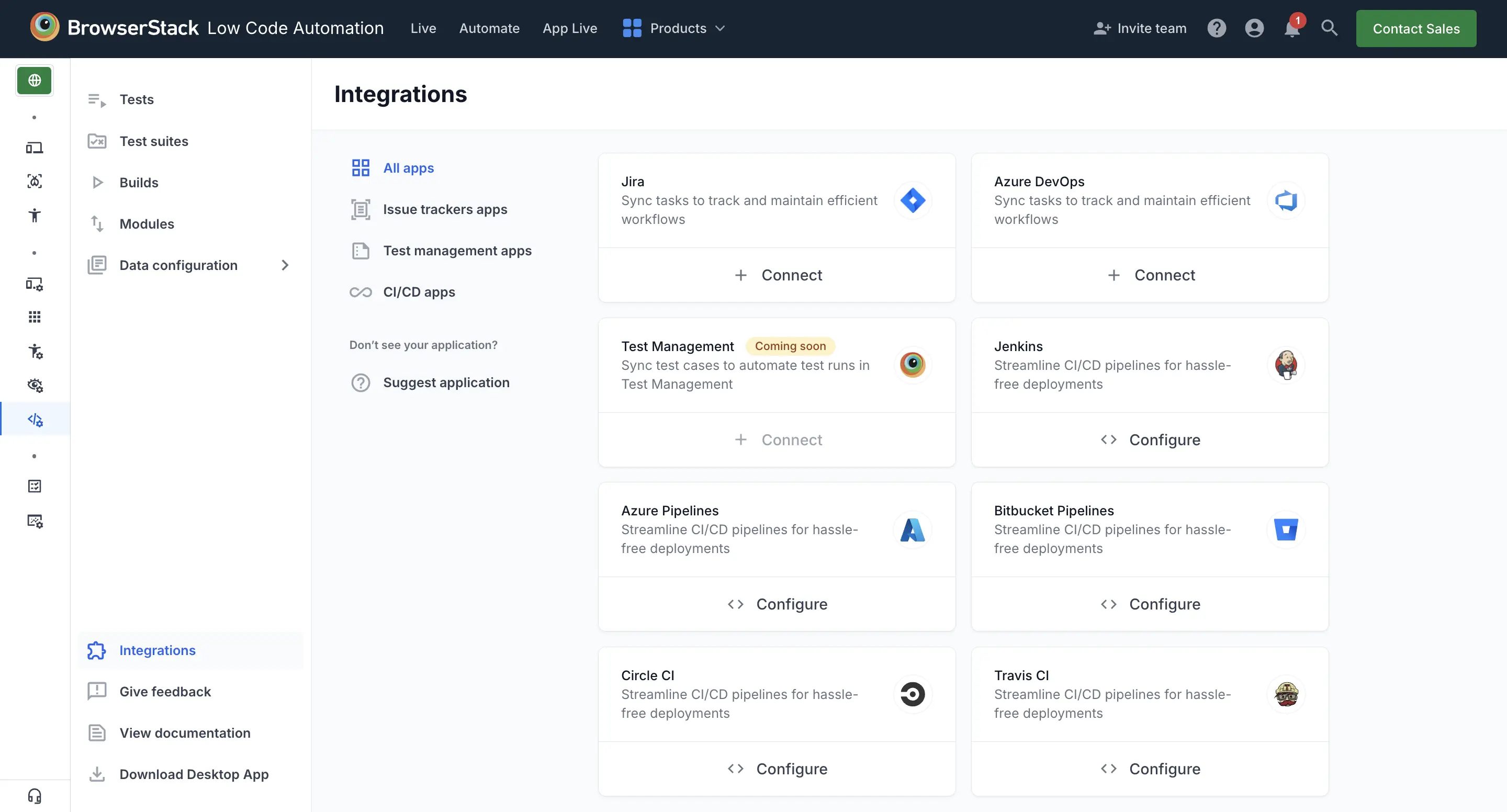
- Click Connect using OAuth.
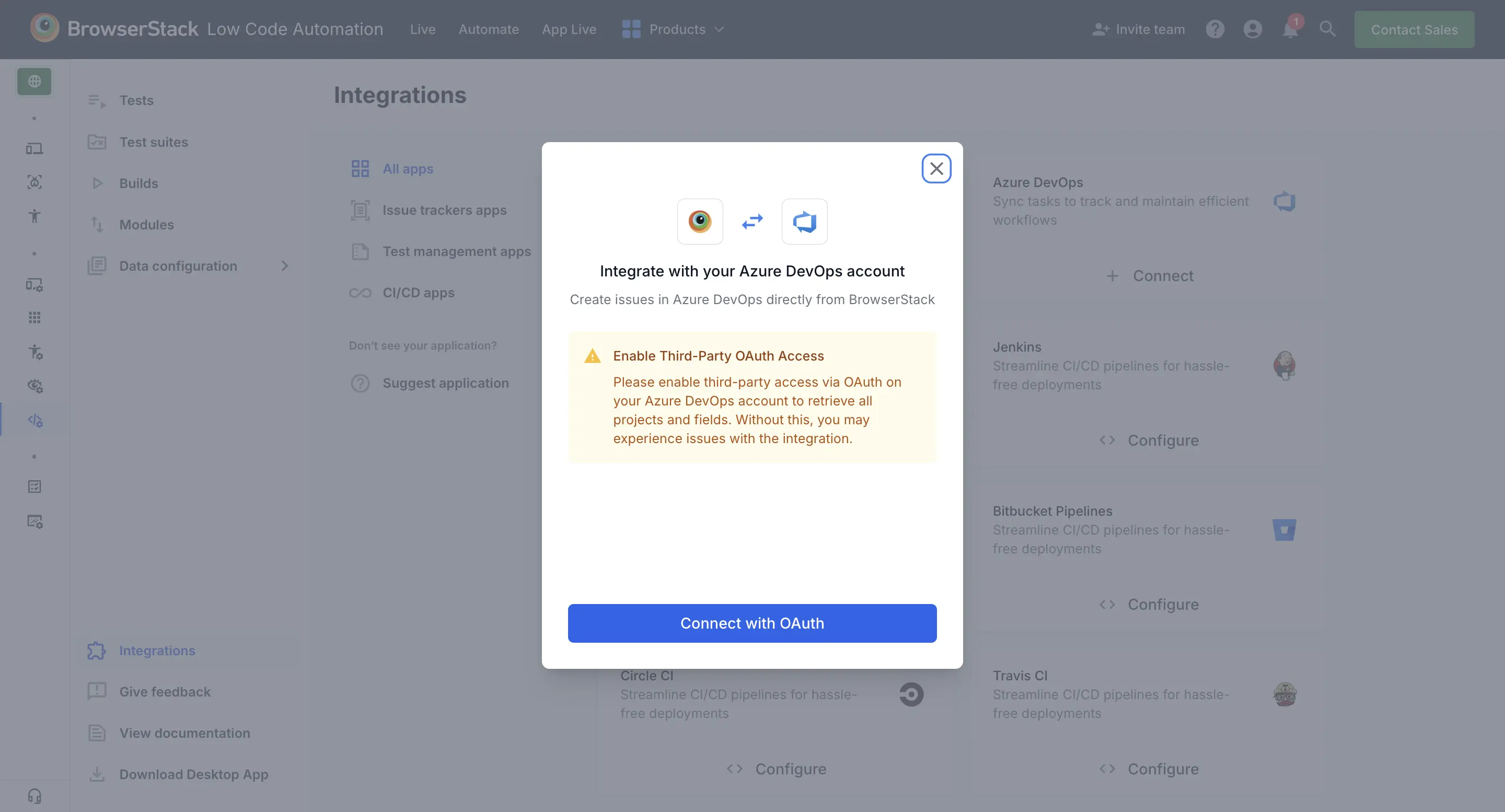
The Azure DevOps integration with Low Code Automation is complete. You can now link new or updated work items to the corresponding tests.
Report an issue on Azure DevOps
- On Low Code Automation, go to Builds and select the required failed test.
- On the Test Run pane, click Report a bug.
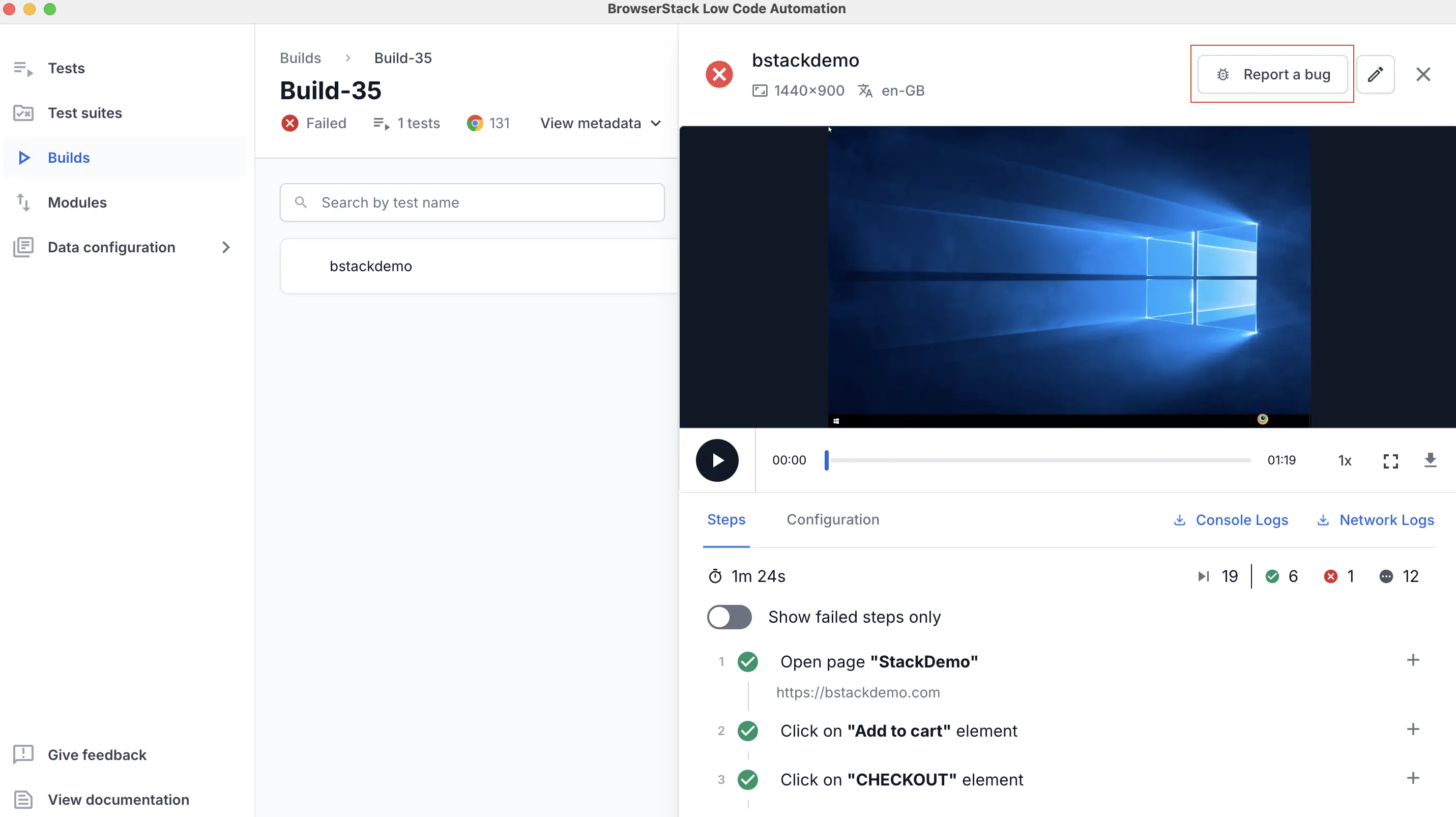
- Select the Organization and project from the Project dropdown menu in the window that appears. Low Code Automation automatically picks up all the fields in your Azure DevOps project.
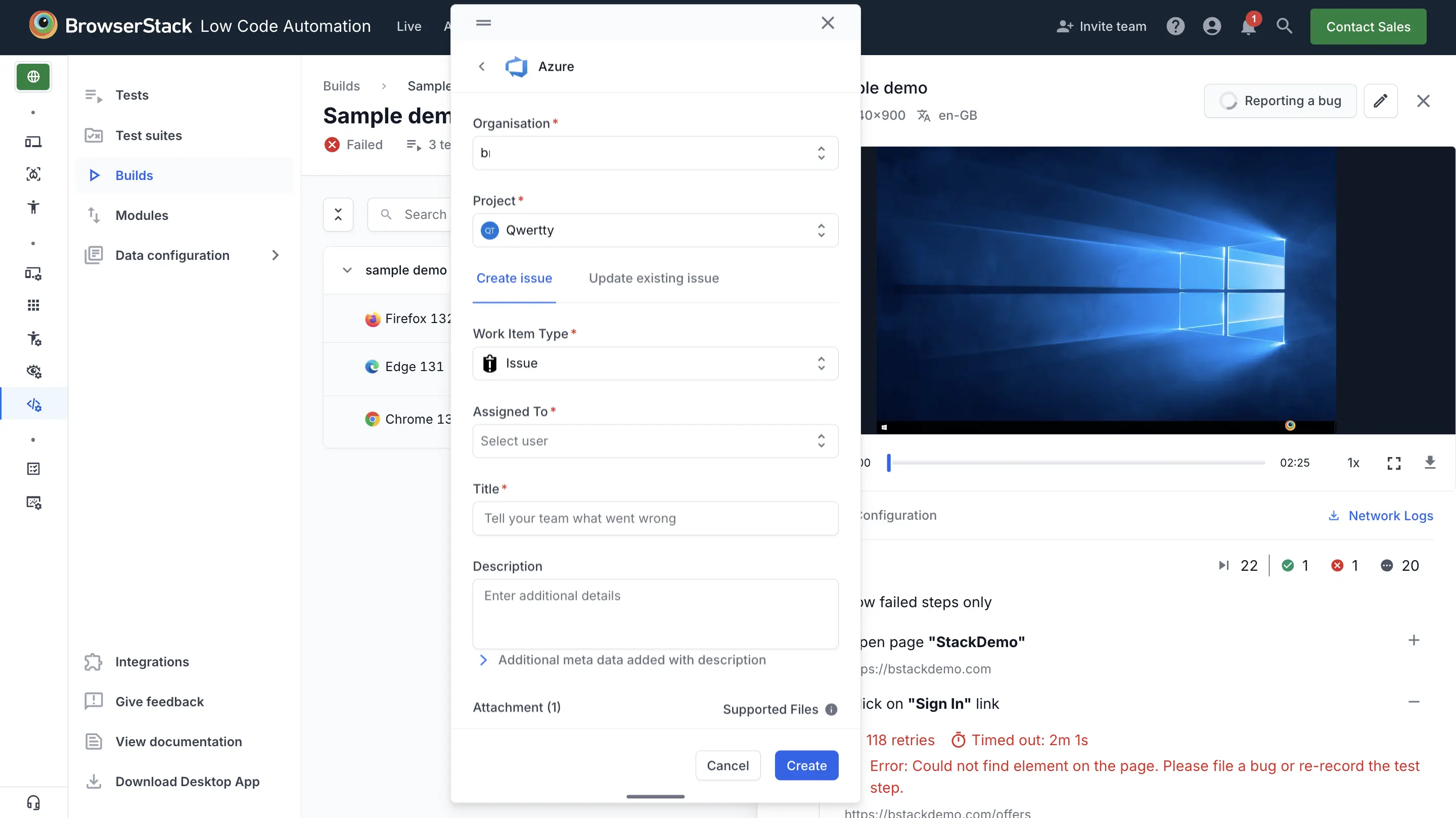
- On the Create issue tab, select the work item type. For example, Issue, Epic, Task and so on.
- Enter the bug details. Click Show all fields to view all the fields.
- You can upload files in the Attachments section. For more information on the supported file formats, click the Supported Files info button.
- Expand Additional meta data added with description to view all the test related metadata that Low Code Automation auto-populates. For more information, see the Metadata to aid in debugging section.
- Click Create.
You will receive a success message that the Azure DevOps issue is created. Click View issue on the success message to view the bug on Azure DevOps. The Azure bug gets associated with the test run.
Metadata to aid in debugging
When you report an Azure DevOps bug, Low Code Automation automatically logs the following metadata to make it easier to debug:
- Test resolution
- Locale
- Starting URL of the test
- Browser
- Browser version
- Device
- Step number
- Step description
- Number of retries
- Timeout
- Error message
- Link to the test: This link redirects user to test page where users can view it.
- Link to the test execution: The link redirects the user to test execution details.
As Low Code Automation automatically logs this information onto the Azure DevOps, you can reduce manual work, debug faster, and improve the data quality of your Azure DevOps bugs.
Update an issue on Azure DevOps
You can update an issue that is linked to a test run. You can also link an existing issue from the Azure DevOps board to a specific test run.
- On Low Code Automation, go to Builds and select the required failed test.
- On the Test Run pane, click work items and then click Report new bug. The Work item button only appears if there is an issue already linked.
- Click the Update existing issue tab, select the project you need from the Project menu, and then select the bug you want to update from the Work Item dropdown menu.
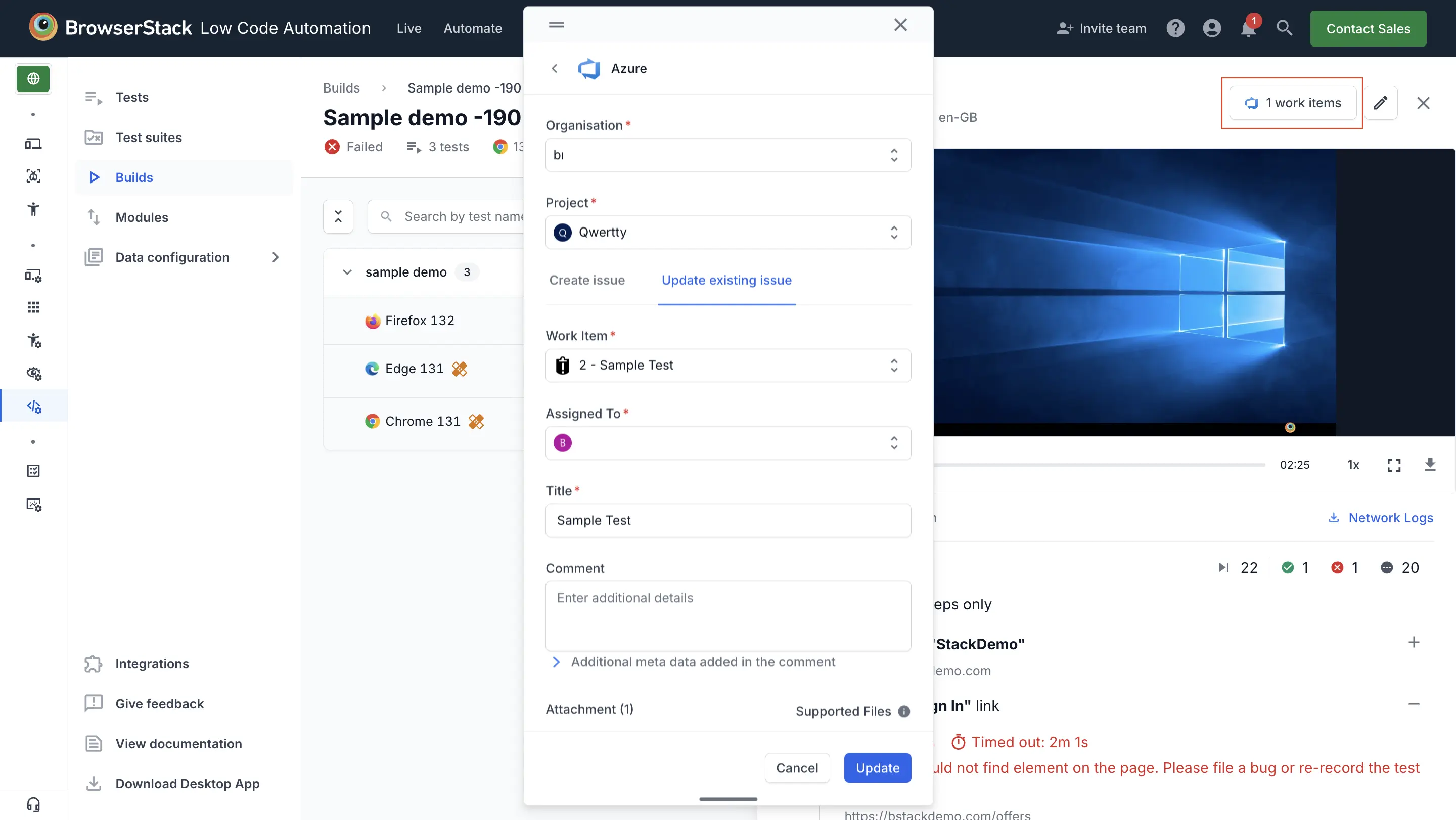
- Click Show all fields to view additional fields. Update the details about the bug.
- Click Update.
You will receive a success message that the Azure DevOps issue was updated.
Disconnect Azure DevOps
To disconnect the Azure DevOps integration:
- Go to the Integrations page and click Disconnect on the Azure DevOps tab.
- In the Disconnect Azure DevOps dialog, type “Disconnect” in the box and click Disconnect again.
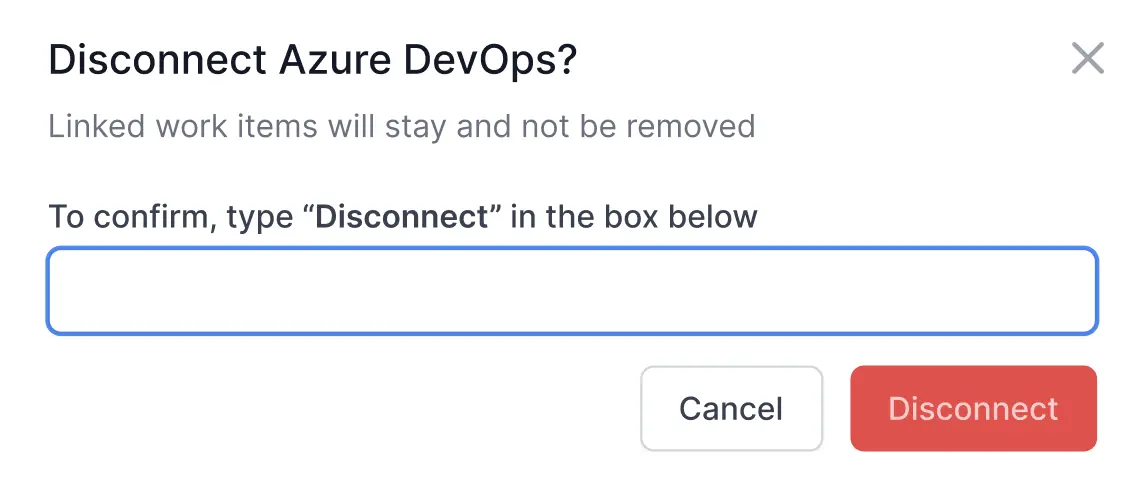
We're sorry to hear that. Please share your feedback so we can do better
Contact our Support team for immediate help while we work on improving our docs.
We're continuously improving our docs. We'd love to know what you liked
We're sorry to hear that. Please share your feedback so we can do better
Contact our Support team for immediate help while we work on improving our docs.
We're continuously improving our docs. We'd love to know what you liked
Thank you for your valuable feedback!
